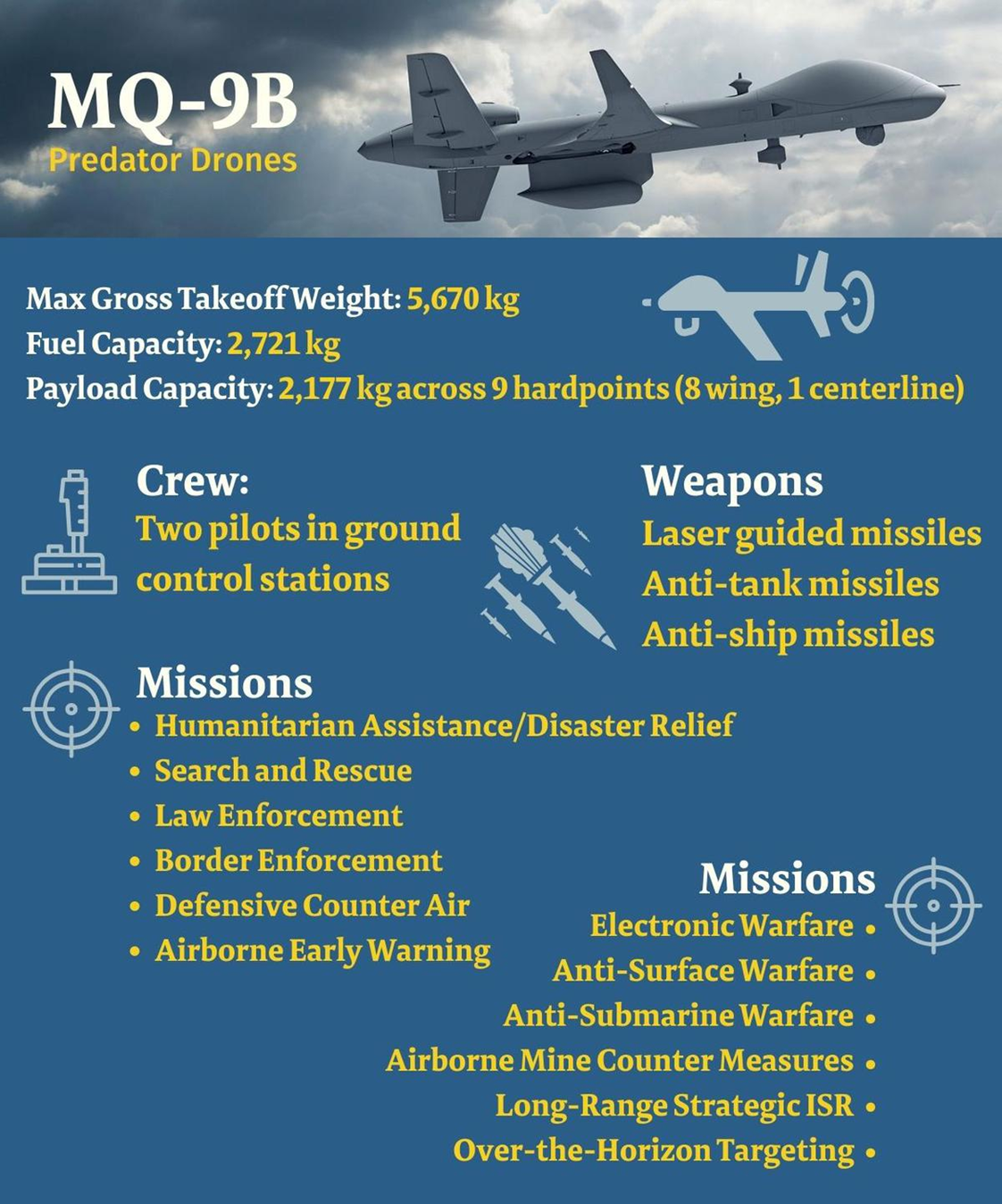- Courses
- GS Full Course 1 Year
- GS Full Course 2 Year
- GS Full Course 3 Year
- GS Full Course Till Selection
- Answer Alpha: Mains 2025 Mentorship
- MEP (Mains Enrichment Programme) Data, Facts
- Essay Target – 150+ Marks
- Online Program
- GS Recorded Course
- Polity
- Geography
- Economy
- Ancient, Medieval and Art & Culture AMAC
- Modern India, Post Independence & World History
- Environment
- Governance
- Science & Technology
- International Relations and Internal Security
- Disaster Management
- Ethics
- Current Affairs
- Indian Society and Social Issue
- NCERT- Science and Technology
- NCERT - Geography
- NCERT - Ancient History
- NCERT- World History
- CSAT
- 5 LAYERED ARJUNA Mentorship
- Public Administration Optional
- ABOUT US
- OUR TOPPERS
- TEST SERIES
- FREE STUDY MATERIAL
- VIDEOS
- CONTACT US
MQ-9B Predator: A Multi-Purpose Aerial Asset
MQ-9B Predator: A Multi-Purpose Aerial Asset
08-05-2024

The Indian Ministry of Defence recently approved the procurement of 30 MQ-9B Predator drones (SeaGuardian variant) from the United States, aiming to enhance the surveillance capabilities of the armed forces.
About the MQ-9B Predator:
- High-Altitude, Long-Endurance UAV: The MQ-9B Predator is a high-altitude, long-endurance armed Unmanned Aerial Vehicle (UAV) capable of autonomous and remotely controlled flight operations.
- Derived from the MQ-9 "Reaper": It is a variant of the MQ-9 "Reaper," developed by General Atomics Aeronautical Systems (GA-ASI) primarily for the United States Air Force (USAF).
- Multifaceted Capabilities: In the US, these drones are utilized for surveillance, intelligence gathering, and airstrikes.
- Sky Guardian and Sea Guardian Variants: The MQ-9B drone has 2 variants: the Sky Guardian and Sea Guardian. The Sea Guardian variant has been operational in the Indian Navy since 2020.
- Impressive Features:
a. Payload Capacity and Fuel Efficiency: It can carry up to 5,670 kg of payload and has a fuel capacity of 2,721 kg.
b. High-Altitude Operations: It can operate at altitudes exceeding 40,000 feet.
c. Stealthy Flight: It can fly as close as 250 meters from the ground without being detected, providing covert surveillance capabilities.
d. Extended Endurance: With a maximum endurance of 40 hours, it offers a reliable platform for prolonged surveillance missions.
e. Speed and Armament: It has a top speed of 275 mph (442 km/h) and is equipped with strike missiles, allowing for precise targeting and elimination of enemy targets. It can carry four Hellfire missiles and approximately 450 kg of bombs.
f. Multi-Role Versatility: The MQ-9B's capabilities make it suitable for various roles, including land and maritime surveillance, anti-submarine warfare, anti-surface warfare, electronic warfare, and expeditionary missions.
g. Autonomous Take-Offs and Landings: It features automatic take-offs and landings, providing operational flexibility.
h. Integration with Civil Airspace: It can safely integrate into civil airspace, enabling joint forces and civil authorities to access real-time situational awareness in the maritime domain, both day and night.
What are Unmanned Aerial Vehicles (UAVs)?
- Unmanned Aerial Vehicles (UAVs), also known as drones, are aircraft that operate without a human pilot or passengers onboard.
- They can be fully or partially autonomous or controlled remotely by a human pilot.
Must Check: Best IAS Coaching In Delhi



